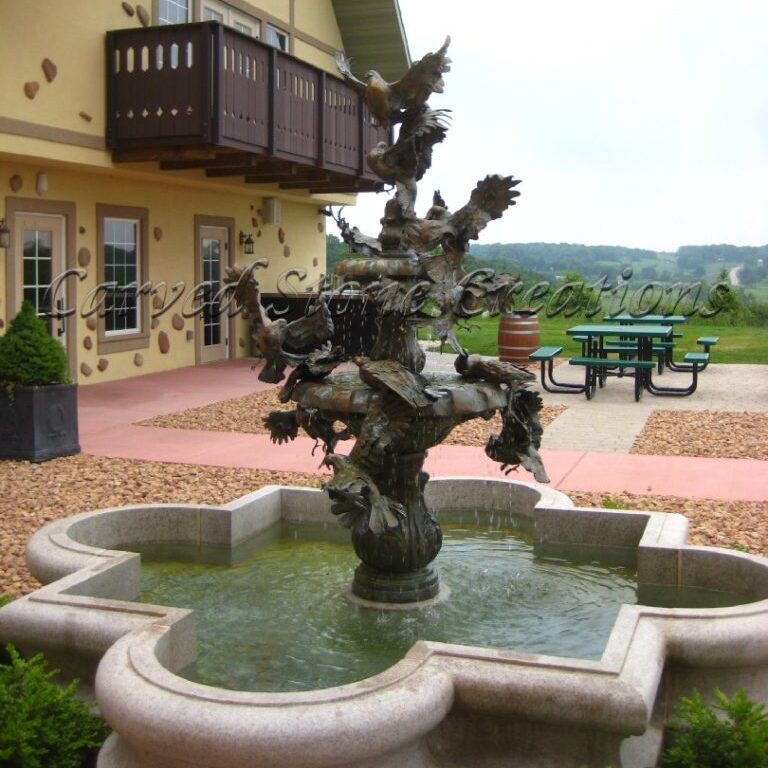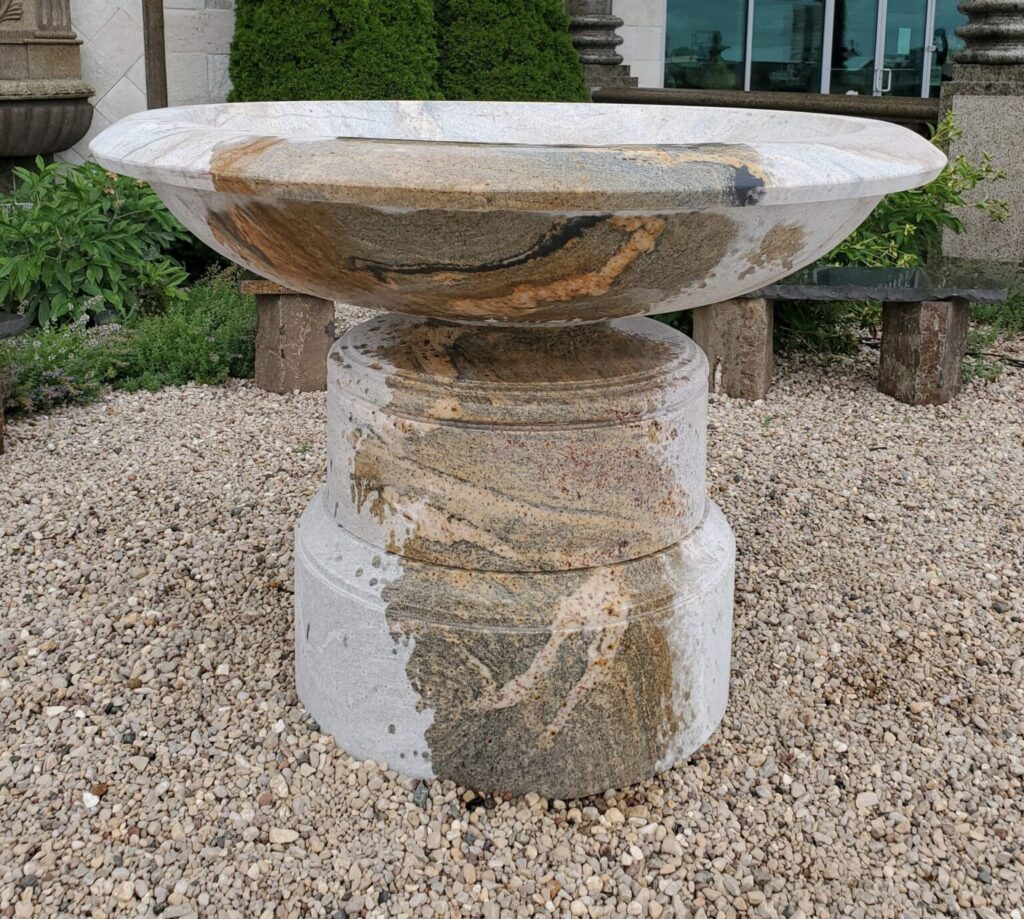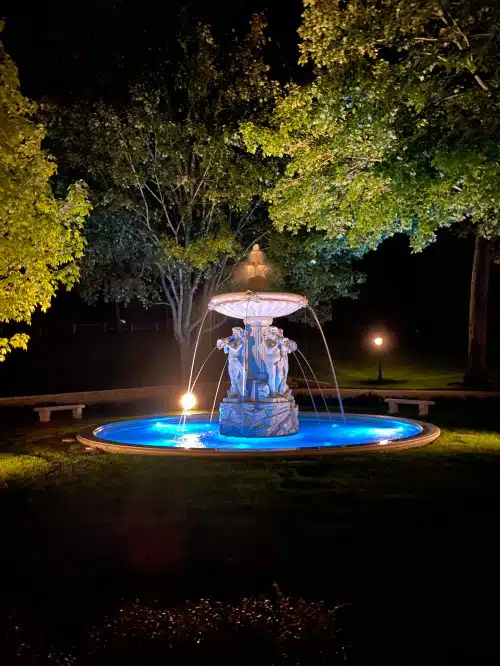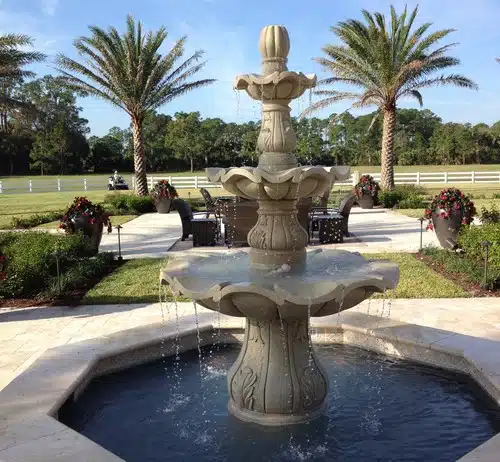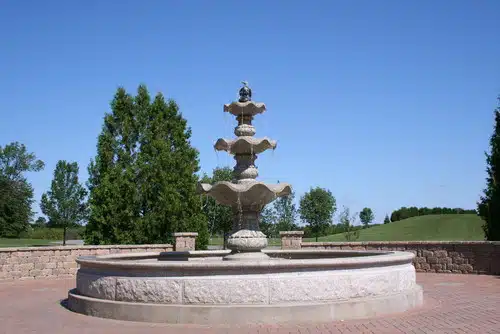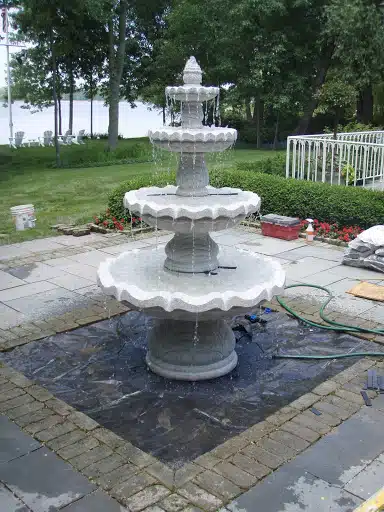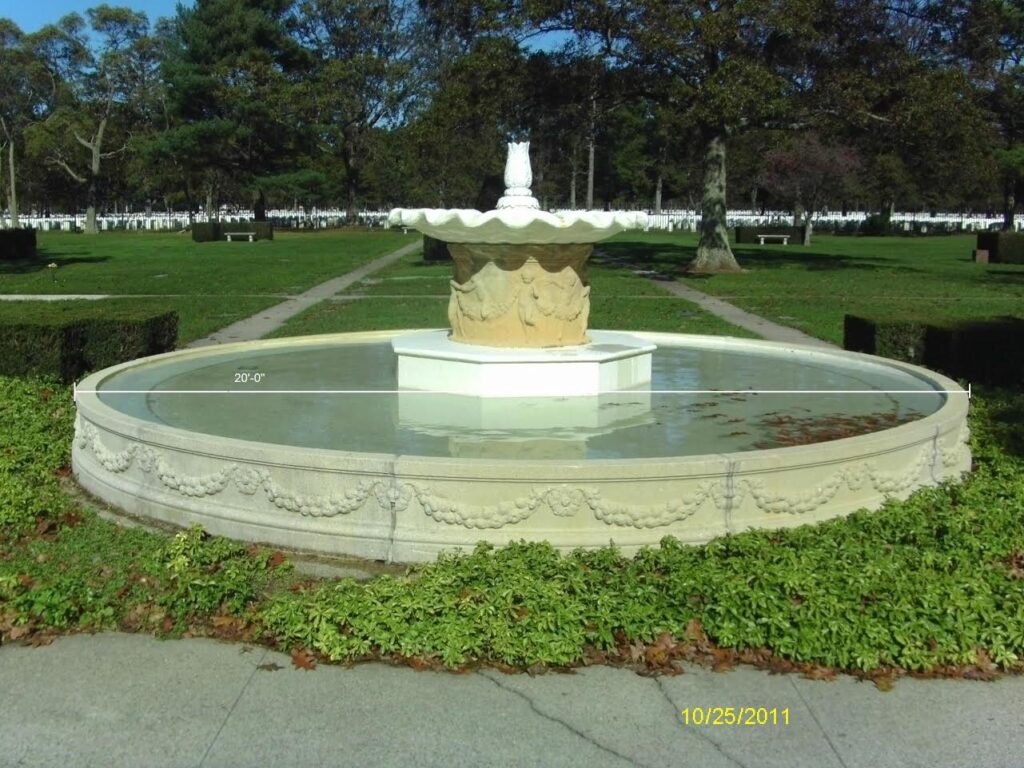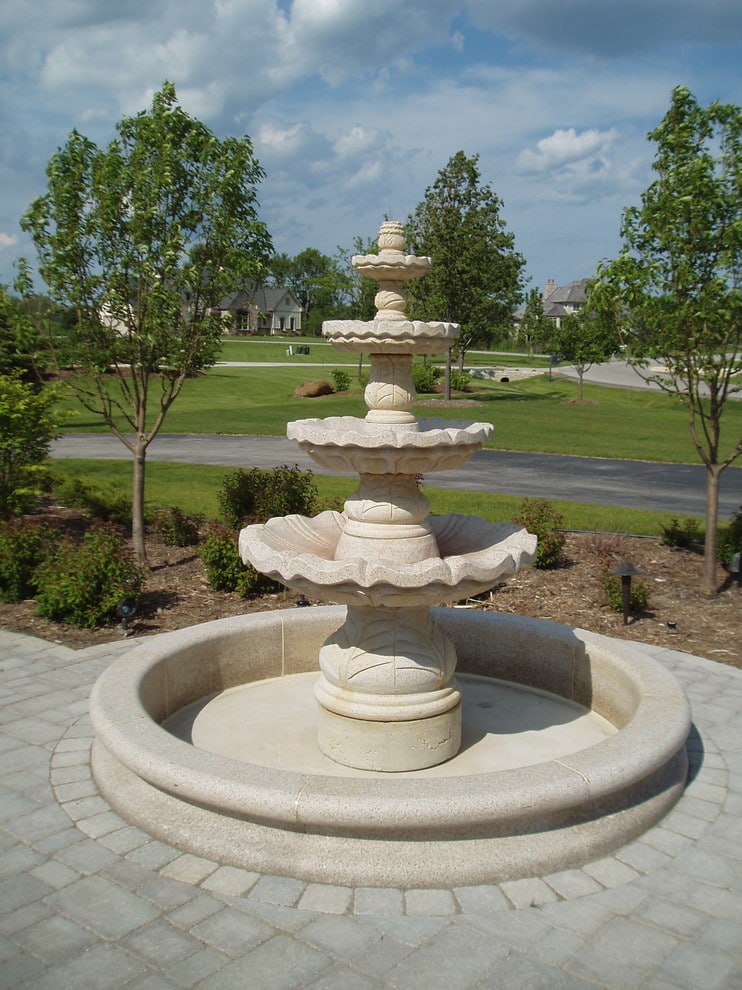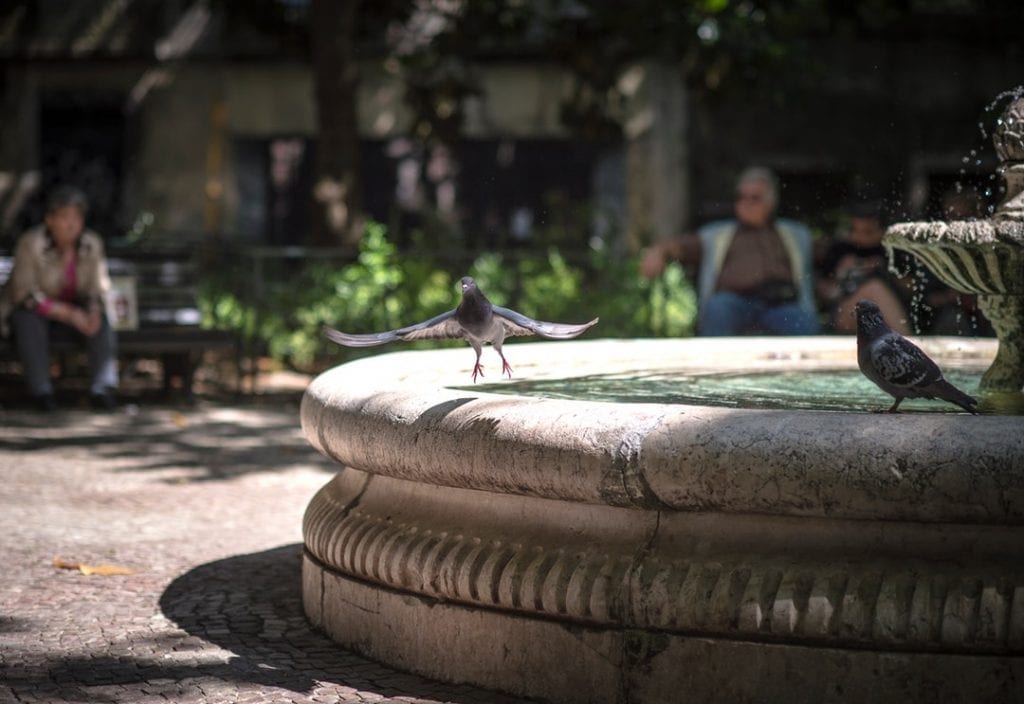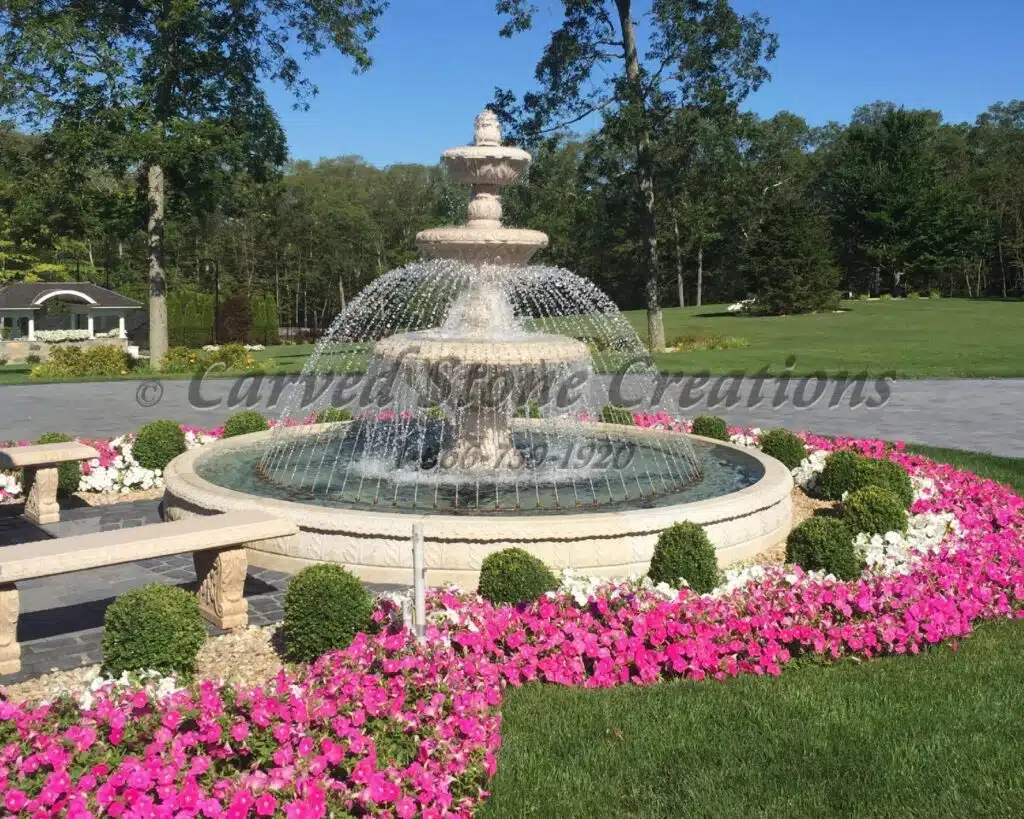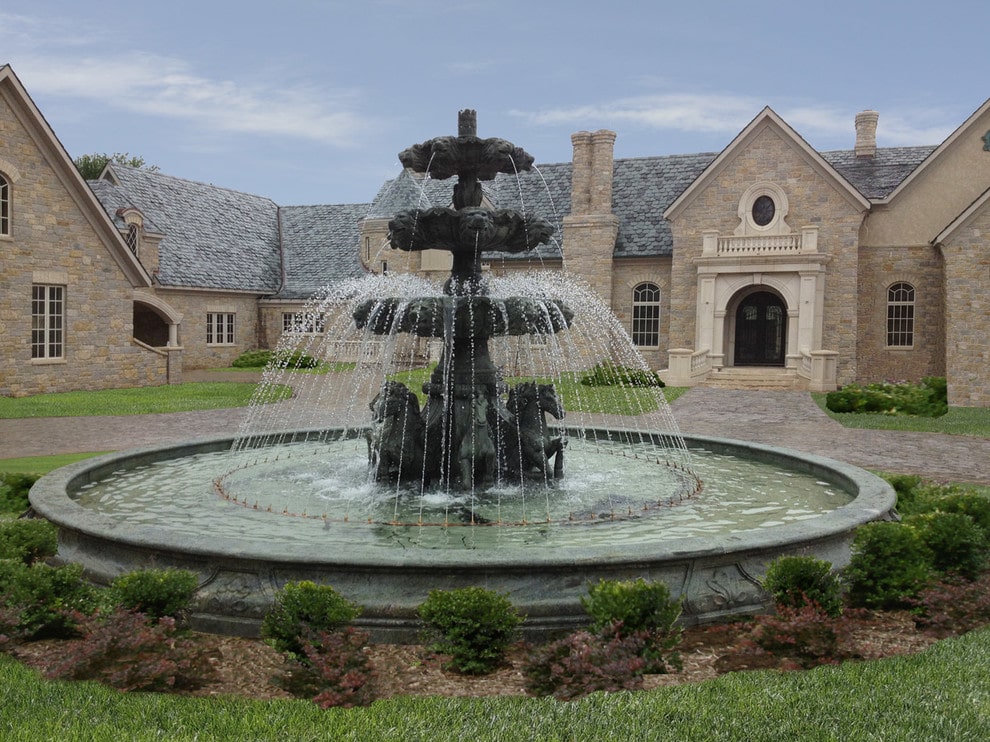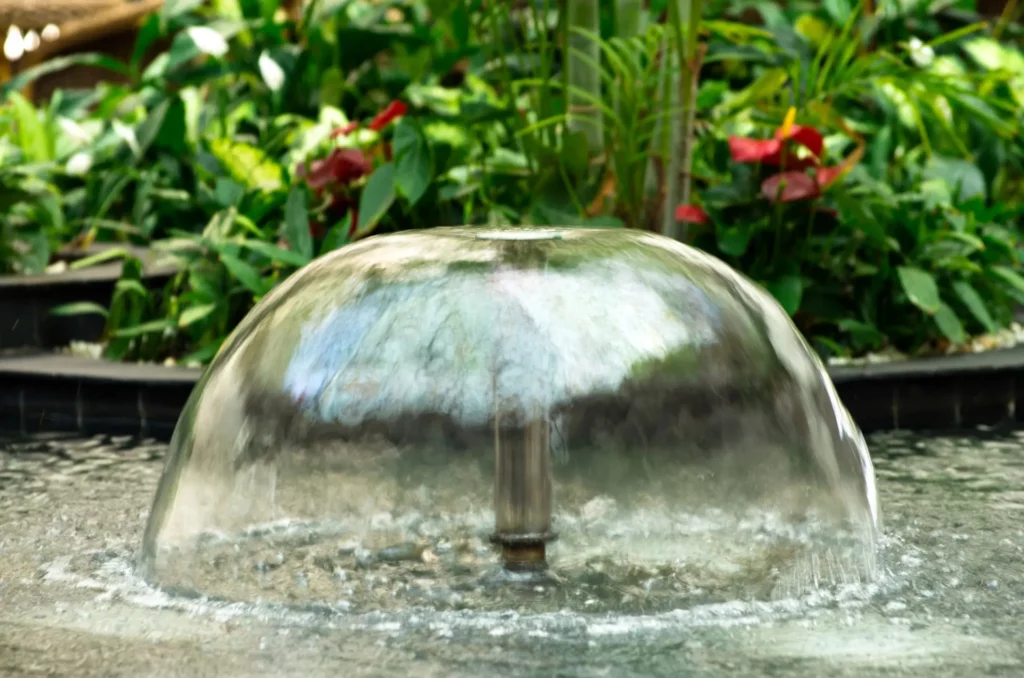The type of Fountain spray ring you purchase can have a huge impact on its longevity in your climate.

- Since if you are in a very sunny climate, and end up buying a PVC fountain spray ring, the damage caused by UV Rays can make your spray ring very brittle in only 2- 4 years.
- Vs if you are in a more northerly climate, it may take as long as 8-10 years before it becomes brittle and falls apart with the slightest impact.
- Though consistent freezing weather can have a huge impact on PVC pipe as well, making the pipe crack very easily, even if there is NOT water in it.
- Vs if you are in a more northerly climate, it may take as long as 8-10 years before it becomes brittle and falls apart with the slightest impact.
- Also, some manufacturers will actually coat their PVC pipe with copper colored paint, to make it look more like a high-end version (as well as to protect the plastic from UV rays.)
- But, we really question how long that copper paint will last in an underwater situation where chlorine or chemicals are always working on the paint, likely causing it to flake / chip off over time.
- So, from our point of view, a fountain spray ring made of stainless steel or copper is a lot better option – for ANY climate.
- And here at Carved Stone Creations, we only use Copper Spray Rings with Brass Nozzles soldered into them.
- As after about a year of exposure to the elements / chemicals in the water, the copper turns a pleasing silvery greyish green color – which tends to look nice in the fountain pool.
- We tend to have “some” spray rings in stock in our warehouse, but the majority of our spray rings are made to order, in exactly the diameter and number of nozzles the customer wants for their specific fountain.
- FYI, almost unbelievably, we received a call years ago from a customer that said he just took over his Grandma’s estate, and wanted to get her approximately 100 year old copper fountain spray ring working again…
- And all he needed was just some replacement nozzles to put into the ring.
- As over time, the brass nozzle can sometimes get a little “eaten” by chemicals or possibly “lost” if someone took them off to clean out a blockage in the stream of water.
- Thus, we felt justified in our thought that the copper spray rings were the best option for our customers.
- And here at Carved Stone Creations, we only use Copper Spray Rings with Brass Nozzles soldered into them.
- In terms of maintenance on a Copper Spray Ring, there are a few things you should know about the way we design them:
- If you are in a climate that gets freezing weather, please ensure you disconnect the pump from the spray ring (before the freezing weather arrives) and bring it inside to protect the pump from the weather.
- While the pump is inside, take the time to clean it (inside and outside) – then place it in a bucket of water in a warm location for the Winter season.
- That ensures that the pump will be ready to go in Spring – when it’s time to get your fountain going again.
- Also, when the pump is disconnected, that ALSO drains the spray ring itself, to protect it from the freezing weather as well.
- As even just an inch of freezing water can have a hugely damaging effect (not only on the copper spray ring itself), but also on the stone fountain too.
- Thus, draining the water out of all parts of your fountain and centerpiece is absolutely needed to have a fountain that will last generations.
- Our pump systems for spray rings typically come with a filtration sock (a large filter that’s attached to the pumps suction port), to allow more time before you need to clean the debris out of your pool.
- As if you ever notice the arcs of water coming out of your spray ring “pulsing” – that typically means there has been a recent rain, and the water level in the pool is causing your nozzles to be underwater for a second – and then come bursting through the water surface in a rhythmic action.
- Normally, we set the height of our spray rings to have the ring just UNDER the water surface, and then just the nozzles sticking out of the surface, to make the spray ring less noticeable.
- So, to fix that pulsing action, you can just wait for natural water loss (via splashes/ evaporation / etc) or you can drain your pool slightly.
- Though, normally the pvc stand pipes set inside the drain fitting in the floor of your fountain pool will be at a height level that would automatically let extra water go down the drain as it rains.
- So, in that case, you might be able just to cut some height off that drain stand pipe – keeping in mind you should really have the water as deep as possible at all times (with an autofill) in order to keep the water cooler and less apt to fill with algae quickly.
- So don’t cut off any more than you need to, in order to keep the nozzles sticking out of the water, but NOT the ring itself sticking out…
- As if you ever notice the arcs of water coming out of your spray ring “pulsing” – that typically means there has been a recent rain, and the water level in the pool is causing your nozzles to be underwater for a second – and then come bursting through the water surface in a rhythmic action.
- Or, if you notice your arcs of water going lower and lower, that typically means the pump is running out of water to push, as its filter is getting totally occluded with debris.
- In that case, turn off the pump, then take the sock off the structure, turning it inside out as you are pulling it off – to capture all the debris inside of it.
- Do not run the pump WITHOUT a filter sock on it, as you could suck a lot of debris into the pump, and accidentally occlude many of your nozzles in the spray ring that way.
- Then, turn it right side out again (outside the pool) to spray it off, and put it back on the structure and turn your pump back on again.
- And hopefully you notice this issue before the pump is completely not pushing water at all, as that can cause it to burn up and need to be replaced.
- Or, if there is not much for “debris” on the filter sock, it’s also possible that the pump itself is getting filled with debris or calcium scale on the inside (by the impeller/armature), and thus it’s another instance where you need to clean the pump quickly before it seizes up completely.
- As a pump that has completely stopped pumping is very hard to bring “back” to working condition again.
- In that case, turn off the pump, then take the sock off the structure, turning it inside out as you are pulling it off – to capture all the debris inside of it.
- Lastly, during the Spring / Summer / Fall if you notice a couple nozzles are just “spluttering” and don’t have a pleasing arc of water coming out of them…
- Normally what I would do is set something narrow (like a long smooth nail or narrow branch) on the edge of the pool within easy reach.
- Then step into the pool, and use one hand to hold the nozzle pointed away from you (so you don’t get all wet while working), and the other hand to unscrew the finger tight nut to take the top part of the nozzle OFF of the spray ring.
- After that, the water will bubble upwards from the hole left in the ring but won’t normally squirt you while you are working on the nozzle.
- As normally what is happening is that there is a bug or weed seed or algae or some kind of debris stuck in the nozzle occluding its flow.
- So, if you aren’t squeamish about germs, you can blow the debris out of the nozzle by pushing air through the small side, and having the debris land OUTSIDE the pool.
- Or, you can poke the smooth nail through the small end of the nozzle, and get the debris out that way.
- Now, putting the adjustable nozzle back ON the spray ring DOES tend to get you a bit wet though…
- As if you have ever tried to attach a nozzle to a running hose of water, you’ll know why – with water squirting everywhere temporarily until you get it twisted on far enough.…
- Therefore, keeping your filter sock cleaned off periodically would help you with not having to complete the above actions too often.
- If you are in a climate that gets freezing weather, please ensure you disconnect the pump from the spray ring (before the freezing weather arrives) and bring it inside to protect the pump from the weather.
